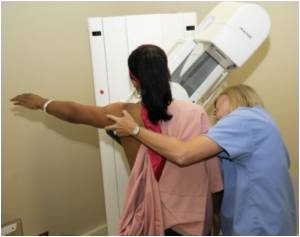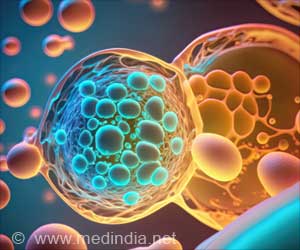US researchers say that silicon microdevices could be used to screen breast cancer cells’ ability to metastasize.

Cell cytoskeleton refers to the cell’s shape and its mechanical properties, explained Masoud Agah, director of Virginia Tech’s Microelectromechanical Systems Laboratory (MEMS) Laboratory in the Bradley Department of Electrical and Computer Engineering.
“Any change in the cytoskeletal structure can affect the interaction of cells with their surrounding microenvironments. Biological events in normal cells such as embryonic development, tissue growth and repair, and immune responses, as well as cancer cell motility and invasiveness are dependent upon cytoskeletal reorganization,” the electrical engineer added.
Understanding how the cell interacts with the contents of its surrounding environment inside the human body, including the introduction of a drug, is a fundamental biological question. The answers have implications in cancer diagnosis and therapy, as well as tissue engineering, Agah said.
In previous experimentation by others in the field, researchers have exposed cells to mechanical, chemical and three-dimensional topographical stimuli. They recorded the cells’ various responses in terms of migration, growth, and ability to adhere. Also, in the past, researchers have created substrates of precise micro- and nano-topographical and chemical patterns to mimic in vivo microenvironments for biological and medical applications.
What distinguishes the work of Agah, a National Science Foundation (NSF) CAREER Award recipient, and his colleagues, is they developed a specific three-dimensional silicon microstructure for their work. Due to its curved isotropic surfaces, they were able to characterize and compare the growth and adhesion behavior of normal fibroblast and metastatic human breast cancer cells, they reported in Biomaterials.
Advertisement
Using their uniquely designed three-dimensional silicon microstructure, they were able to incorporate three key cellular components found in any breast tumor microenvironment. Additionally, they were able to determine the detailed interaction of the cells within this environment, including the normal breast cells, the metastatic breast cancer cells, and the fibroblast cells.
Advertisement
Following their initial findings, Strobl and Agah, along with Mehdi Nikkhah of mechanical engineering; and Raffaella DeVita of engineering science and mechanics and the director of the soft biological systems laboratory. identified a unique application of the experimental anti-cancer drug SAHA in their studies with the silicon microstructure. SAHA, also known as Vorinostat, is the first drug of its type to receive Food and Drug Administration approval for clinical use in cancer treatment.
Unlike many of the conventional cytotoxic chemotherapy agents that target DNA to kill cancer cells, SAHA’s unique properties include its ability to inhibit a family of enzymes referred to medically as “histone deacetylases.” These enzymes are known to “increase levels of acetylation of many proteins, including beta-actin, alpha-, and beta-tubulin, and additional actin binding proteins comprising the cytoskeleton.
“The role of drugs such as SAHA in the control of cancer cell metastasis is only beginning to be understood,” explained Strobl, “however our work shows that SAHA elicits a very characteristic cytoskeletal alteration specifically in metastatic breast cells that provides a handle for predicting which breast cells in a cell mixture might have the ability to metastasize.”
Cell motility is “one hallmark of metastatic cancer cells involving the coordinated actions of actin and other cytoskeleton proteins,” Agah explained. When metastatic disease develops, it is usually fatal.
They found SAHA caused cancer cells to stretch and attach to the microstructures through actin-rich cell extensions. By contrast, control cells conformed to the microstructures. This result allowed them to “conclude that isotropically etched silicon microstructures comprise microenvironments that discriminate metastatic mammary cancer cells in which cytoskeletal elements reorganized in response to the anti-cancer agent SAHA.”
The Virginia Tech work in this area “is the first to address the use of microdevices to study this emerging class of anti-cancer agents,” Agah said.
Source-Medindia







